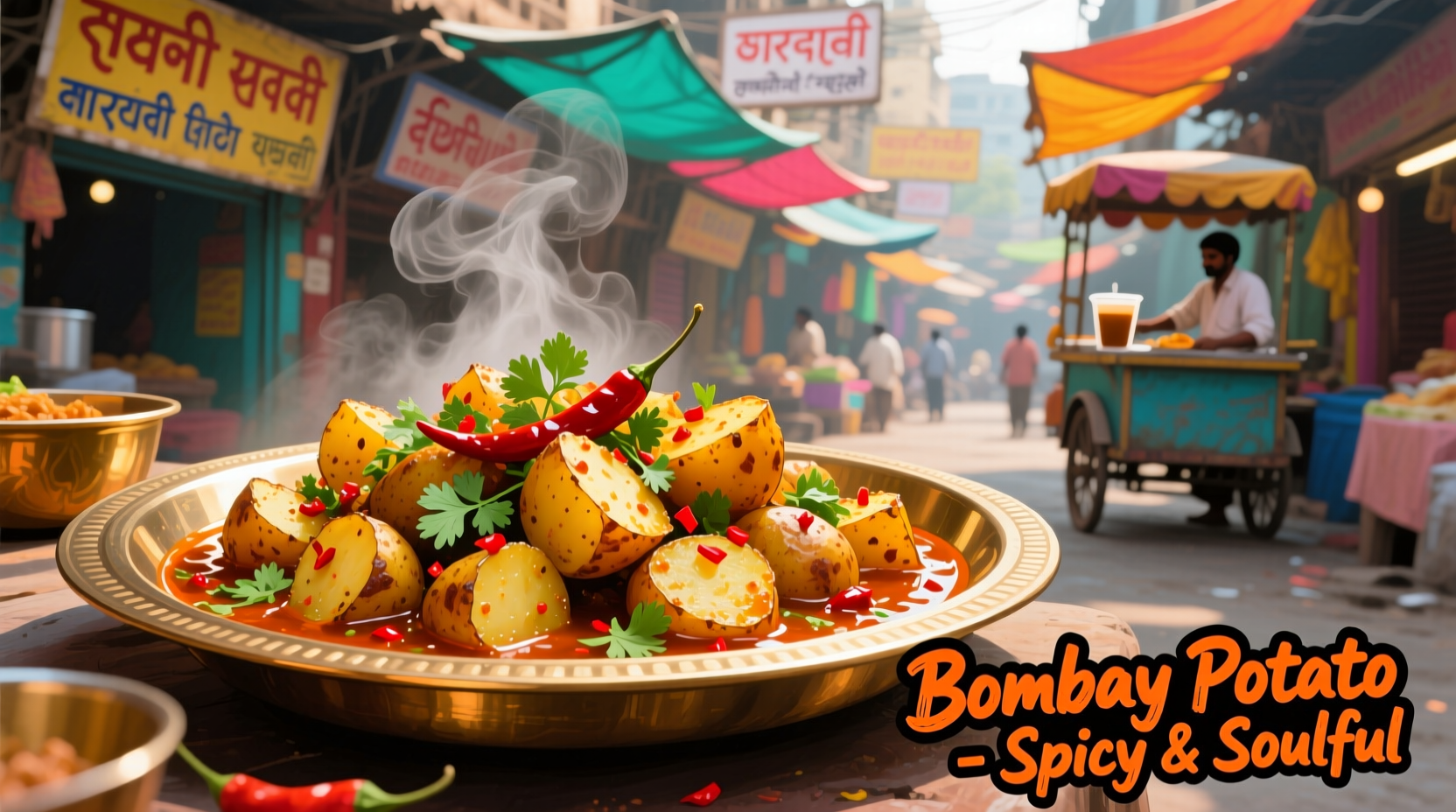What Makes Bombay Potatoes Special
Bombay potatoes (also known as aloo chaat or bateta nu shaak in regional Indian dialects) represent a culinary fusion that emerged during British colonial rule in India. The dish combines traditional Gujarati and Marathi potato preparations with British-influenced street food presentation.
| Traditional Preparation | Modern Adaptation | Key Difference |
|---|---|---|
| Boiled then shallow-fried | Parboiled then pan-fried | Modern version reduces oil usage while maintaining crispness |
| Mustard oil base | Neutral oil base | Adapted for global ingredient availability |
| Hand-ground spice paste | Powdered spices | Preserves flavor while reducing preparation time |
Essential Ingredients and Why They Matter
The magic of Bombay potatoes lies in the precise spice balance. Authentic versions require these non-negotiable components:
- Yukon Gold potatoes - Their buttery texture and moderate starch content create the ideal crispy-tender result
- Mustard seeds - Provide the distinctive nutty aroma when tempered (scientifically known as Brassica juncea)
- Fresh curry leaves - Contain over 50 volatile compounds that create complex flavor layers
- Asafoetida (hing) - A pinch transforms the entire flavor profile by enhancing umami notes

Step-by-Step Cooking Process
Preparation Phase (5 minutes)
- Peel and cut 1.5 lbs Yukon Gold potatoes into 1-inch cubes
- Boil in salted water for 5-7 minutes until slightly tender but holding shape
- Drain thoroughly and let air-dry for 10 minutes (critical for crispiness)
Cooking Phase (15 minutes)
- Heat 2 tbsp oil in cast iron skillet over medium-high heat
- Add 1 tsp mustard seeds and let pop (about 30 seconds)
- Add 8-10 curry leaves, 1/4 tsp asafoetida, and 1 chopped green chili
- Add potatoes in single layer; cook undisturbed for 4 minutes
- Flip and add 1 tsp turmeric, 1 tsp cumin powder, 1/2 tsp red chili powder
- Cook 5-7 minutes until golden and crispy
- Finish with 1 tbsp lemon juice and fresh cilantro
Avoid These Common Mistakes
Professional chefs consistently identify these pitfalls that ruin Bombay potatoes:
- Using waxy potatoes - Results in soggy texture (Russets break down too much)
- Overcrowding the pan - Creates steam instead of crispiness
- Adding spices too early - Burns delicate compounds before they can infuse
- Skipping the drying step - Moisture prevents proper crisping
When and How to Serve Bombay Potatoes
This dish functions differently across contexts:
- Street food context: Served in paper cones with tamarind chutney as a snack
- Home meal context: Paired with dal and roti as part of main course
- Modern fusion context: Used as topping for chaat bowls or stuffed in wraps
According to culinary anthropologists at the University of Mumbai's Food Studies Department, traditional Bombay potatoes contain approximately 180 calories per serving with 4g protein and 30g complex carbohydrates (source).
Variations for Different Dietary Needs
Vegan Version
Authentic Bombay potatoes are naturally vegan. Just ensure your asafoetida doesn't contain wheat flour (some commercial versions do).
Lower-Sodium Option
Reduce salt by 50% and add 1/4 cup diced tomatoes during cooking for natural flavor enhancement.
Extra-Crispy Restaurant Style
Double-fry method: First fry at 325°F for 3 minutes, rest 5 minutes, then refry at 375°F for 2 minutes.
Storage and Reheating Guidelines
Bombay potatoes maintain quality under specific conditions:
- Room temperature: Enjoy within 2 hours for optimal texture
- Refrigeration: Store in airtight container up to 3 days (texture degrades)
- Reheating: Always use dry heat method (oven or air fryer at 375°F for 5-7 minutes)
- Freezing: Not recommended (potatoes become mushy)











 浙公网安备
33010002000092号
浙公网安备
33010002000092号 浙B2-20120091-4
浙B2-20120091-4